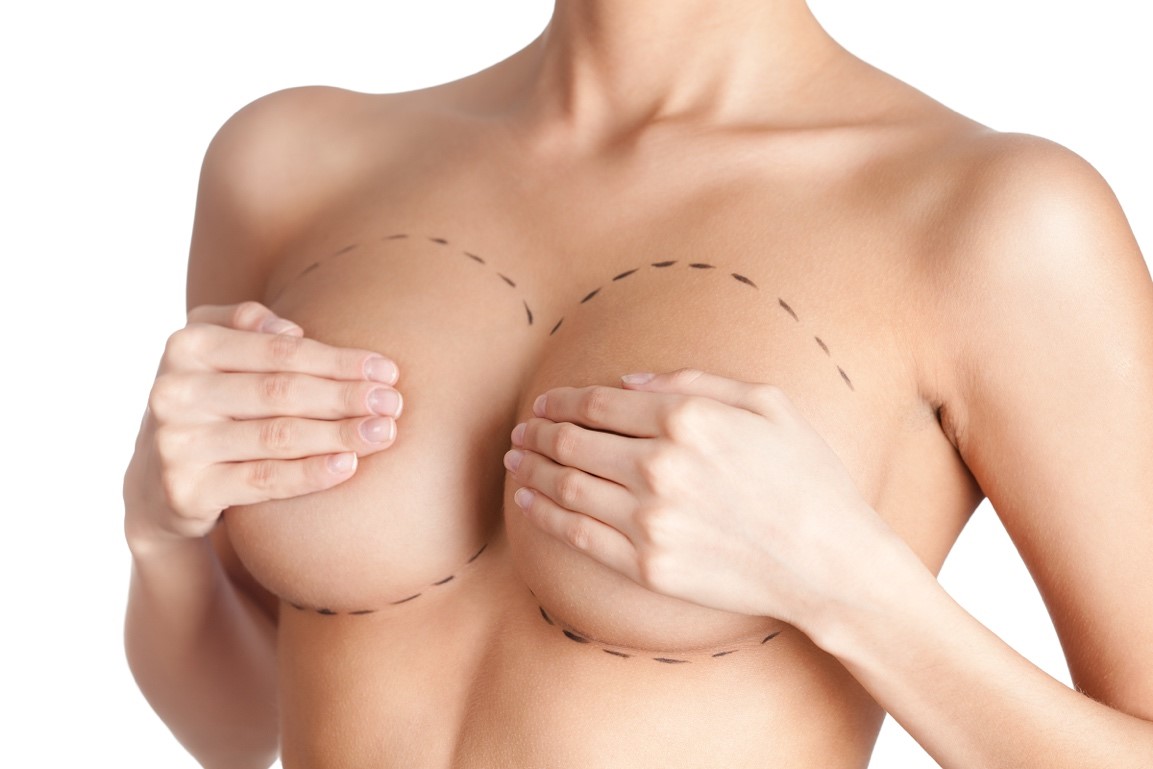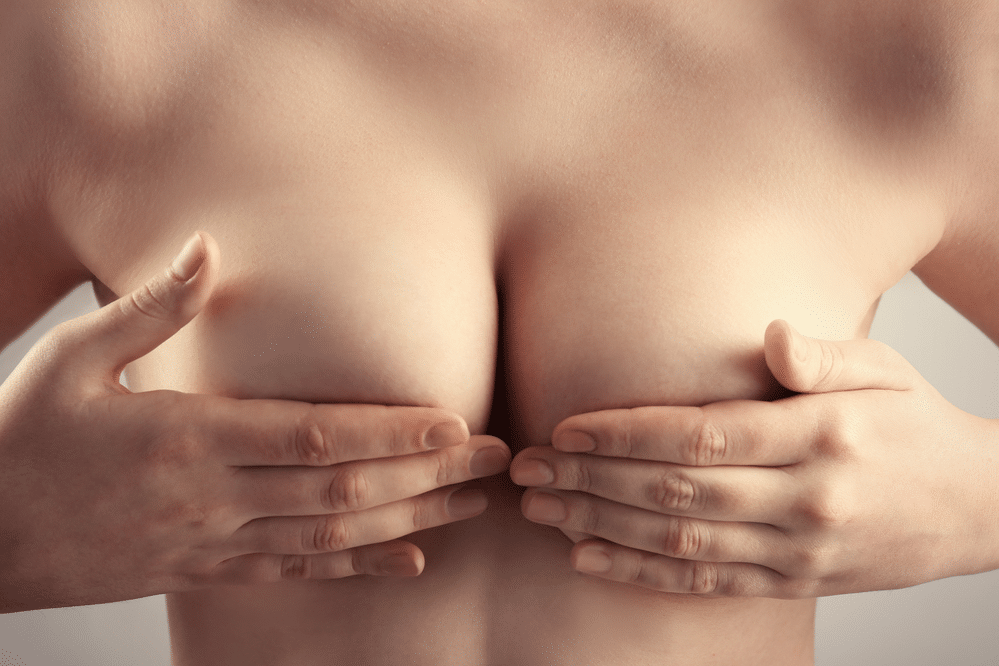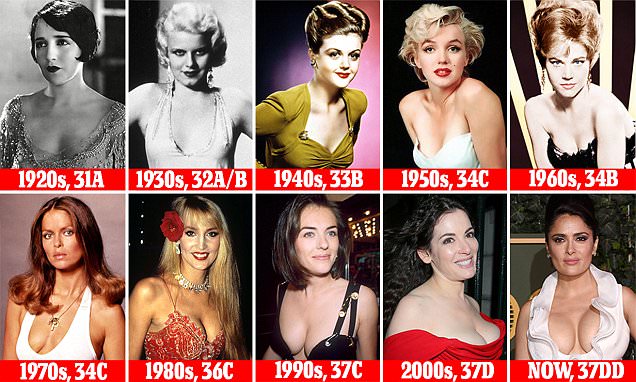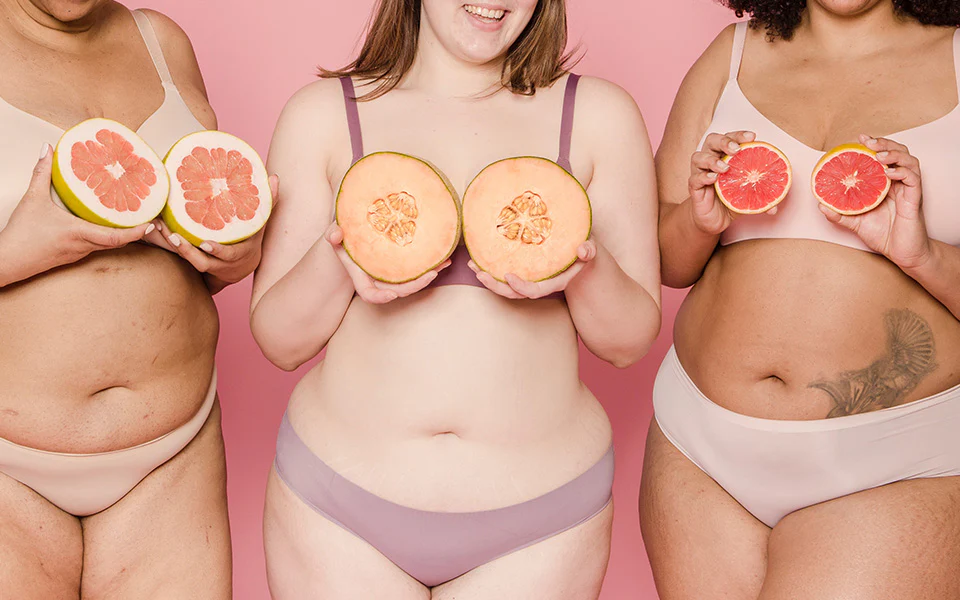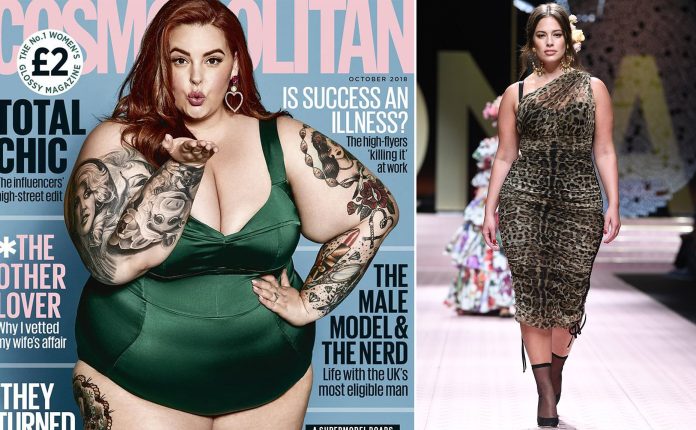Stars Who Love Their Plastic Surgery
Body confidence can come in many forms — whether it’s “I woke up like this” total acceptance, the endorphins you feel after hitting the gym, highlighting a favorite feature with clothing choices or, for some, making the decision to undergo plastic surgery to augment (or de-emphasize) certain features.
Celebrities are no stranger to cosmetic procedures, but for these stars — including Meghan Trainor, Jessie James Decker, Kaley Cuoco and more — they’re so happy with the results, they’re sharing that joy with the world, encouraging others to do whatever they need to do to feel like the best version of themselves.
Meghan Trainor
:max_bytes(150000):strip_icc():focal(748x309:750x311):format(webp)/meghan-trainor-spotify-now-playing-event-2024-wango-tango-2025-051225-4630519adf5245dca115d10b15e44d99.jpg)
How much does Meghan Trainor love her new implants? She changed the lyrics of her song “All About That Bass” to be “I guess it’s pretty clear, I got some new boobs!” The singer flaunted her body at the Wango Tango concert in May 2025, after revealing earlier in the year that, after having her two children, she had been losing weight with the help of Mounjaro, and had gotten a breast lift and implants.
“I feel so girly and I love it, and it makes me so much more confident and it’s like the best decision I ever made,” she told PEOPLE after the surgery. “I smile every time I shower.”
Lindsay Arnold
:max_bytes(150000):strip_icc():focal(745x306:747x308):format(webp)/lindsay-arnold-2-before-after-breast-augmentation-013125-5f9a655c66c94ee68ca75e841f4479cd.jpg)
In January 2025, the former Dancing with the Star pro shared that she had undergone a breast lift and augmentation and was “sooo happy with the results already,” showing fans the before and after shots.
“I appreciate the respect that this is something that I wanted to do for myself,” she added.
Kaitlyn Bristowe
:max_bytes(150000):strip_icc():focal(745x244:747x246):format(webp)/Kaitlyn-Bristowe-surgery-123024-tout-52e317cd279240d9b701eef277ff5e93.jpg)
Former Bachelorette Kaitlyn Bristowe is an open book to fans, sharing the before and after details of all her procedures (including a recent blepharoplasty that had an unfortunate encounter with her dog, to recently welcoming “twins” — breast implants – and telling all her friends). And most of all, she’s open about the fact that she’s doing it for herself, and not looking for any input from the internet.
“Believe it or not I’ve done more work on the inside. You can’t physically see that, but I’ve never felt it more,” she said on Instagram in December 2024. “To the people who always wanna comment, ‘You were so much prettier before all the work you’ve had done,’ I suggest you do the important work on the inside before judging what’s on the outside.”
Lily Allen
:max_bytes(150000):strip_icc():focal(737x306:739x308):format(webp)/Lily-Allen-surgery-051425-2-3b159797b58b4c53aaa254837e8f16d0.jpg)
Following her divorce from David Harbour, Lily Allen got “some additions to the family,” as she joked of her implants on her Miss Me? podcast.
“They look really incredible when I take my top off and my bra off, but there’s definitely a contrast in age between my breasts and my face,” she joked, elaborating that when it comes to the difference between the two. “I’m like, 40 [facially], 18 [on her torso].”
Sami Sheen
:max_bytes(150000):strip_icc():focal(750x422:752x424):format(webp)/Sami-Sheen-surgery-051425-f1c2c136bb6c4f01b743607561f99431.jpg)
The eldest daughter of Charlie Sheen and Denise Richards cried tears of happiness upon seeing the results of her nose job, as captured on Denise Richards & Her Wild Things in March 2025.
“I’ve wanted this for so long. Oh, my God, it looks so good,” she said. “I feel so pretty now. Now I feel like I can finally get my headshots done to start modeling. This was the one thing holding me back. Now I got a good nose.”
Jana Kramer
:max_bytes(150000):strip_icc():focal(749x291:751x293):format(webp)/Jana-Kramer-5b4e10a30e3e4f8baf5792c62f3fef5f.jpg)
In March, the singer shared that she was going to get a breast augmentation “because I want to,” she said, adding, “bottom line, I’m choosing myself, I’m choosing my size, I’m doing what’s right for me. I know a woman’s body is beautiful no matter what shape or size but I want this.”
Months later, the star posted another Instagram confirming that she was thrilled with the choice and the way she feels in her body now. “Since my breast augmentation I have felt more empowered about my decision. I’m proud that I have made choices for me.”
Teresa Giudice
:max_bytes(150000):strip_icc():focal(759x370:761x372):format(webp)/teresa-giudice-60a2129708604da1a9030c99e4123cbe.jpg)
The Real Housewives of New Jersey star got a nose job in February 2021 and “no one even noticed,” she said on Watch What Happens Live. According to The Sun, she had previously discussed the procedure at an event in New Jersey, saying fiancé Luis Ruelas supported her decision.
“I asked Louie, I’m, like, ‘Babe, should I get my nose done?’ ” she said. “And he’s like, ‘Is it going to make you feel better?’ And I said, ‘Yes.’ So he said, ‘Do it.'”
Jessie James Decker
:max_bytes(150000):strip_icc():focal(11024x3299:11026x3301):format(webp)/jessie-james-decker-2-066757286436453896f25775d5849c0f.jpg)
The singer and Kittenish designer shared with fans that she decided to “go big or go home” after she and husband Eric Decker were done having kids, opting for a breast augmentation.
“They were so big and perky before children and I wanted them back … plus some,” she explained. “I feel great; I’m super happy with them.”
The star, who often shuts down critics on her Instagram, went on to say “it’s not for everybody but it was certainly for me! I always say, you do you and do what makes you feel confident and sexy.”
Iggy Azalea
:max_bytes(150000):strip_icc():focal(745x237:747x239):format(webp)/Iggy-Azalea-2019112520-5dc7c3f1fd5e44f194ec714fdd9cabee.jpg)
“It s hard to be a woman in 2015 with social media … There’s a lot more pressure to look beautiful,” the rapper told Seventeen at the time about her decision to get a nose job, shortly after admitting to Vogue she’d gotten breast implants. But her number one rule for cosmetic surgery: come clean. “I’m not denying it. Denying it is lame,” she said.
In 2023, Azalea revisited the conversation around plastic surgery on Emily Ratajkowski’s podcast, saying she was happy to show off her body because she was in control of the narrative — and proud of the way she looked.
“I like my breasts. They’re fake and they look f—ing good and I like them. I’m happy with them and I like my body,” she said. “I liked my body before. I liked my face before and I like it now. I like myself, I never didn’t. I never hated myself.”
Delores Catania
:max_bytes(150000):strip_icc():focal(745x305:747x307):format(webp)/Delores-Catania-00fd94795d2c4fe885cdc8a37b683afd.jpg)
Fellow Real Housewives of New Jersey star Delores Catania said that another procedure of Teresa’s, her breast implants, inspired her to go under the knife herself.
“I was looking around at boobs all the time, to see which ones I liked best, and I really felt that Teresa Giudice‘s were best,” she said. “My breasts weren’t really on my priority list until I saw how good hers looked and realized how much of an improvement I could have. It really lit a fire under my ass because I knew that I could get a better result with different implants.”
Madison LeCroy
:max_bytes(150000):strip_icc():focal(6074x1599:6076x1601):format(webp)/madison-lecroy-cc5bcd04ca5d4b3989948081a036d923.jpg)
Two weeks after sharing a photo of herself about to undergo breast augmentation surgery, the Southern Charm star showed off the results in a baby-blue crop top, captioning the Instagram post “blooming.”
The star had opened up about her desire for a bust boost before the surgery, writing “If life gives you lemons 🍋 , Dr O’Neill can turn them to melons. Thanks to his excellent team for making this momma feel like herself again,” and then clarifying, “Just because I’m having an implant does not mean that I’m coming with boobs as big as my head … we are going to stay as natural as possible.”
Angelina Pivarnick
:max_bytes(150000):strip_icc():focal(741x360:743x362):format(webp)/angelina-pivarnick-1-ae03328d565b4be6af05ff44433d1fb7.jpg)
Just how happy was the former Jersey Shore star with her decision to get a breast augmentation? So happy, it warranted an Instagram post and several Instagram Stories segments about her new look.
“My boobies are my fave part of my body now,” she wrote. “I never had one surgery in my life until this and let me tell you I would do it again because [Dr. John Paul Tutela] is that amazing.”
Chrissy Teigen
:max_bytes(150000):strip_icc():focal(554x272:556x274):format(webp)/chrissy-teigen-2-a088cafdd4a04d6485fe4b01d16499bc.jpg)
The multi-hyphenate star always keeps it real, and that includes uncovering the “big secret” that celebrities get liposuction in their armpits. But she only has good things to say about that now decade-old decision.
“I had an armpit sucked out, which was one of the best things,” the model told Refinery 29 in 2017. “It was so easy. It made me feel better in dresses; I felt more confident. It was the dumbest, stupidest thing I’ve ever done. The dumbest, but I like it, whatever. I have no regrets, honestly.”
Kim Zolciak-Biermann
:max_bytes(150000):strip_icc():focal(629x632:631x634):format(webp)/kim-zolciak2-35573f0c457a4557810fd6e55844f292.jpg)
While Zolciak-Biermann and her daughter Brielle Biermann‘s lip injections are a frequent topic of discussion, Biermann revealed a different type of injections that her mom has gotten: ear lobe fillers.
The 21-year-old star tweeted about her mom’s treatment on on Twitter, “My mom gets filler in her ears because her diamond earrings are too heavy….. #richpeopleproblems.”
Anna Faris
:max_bytes(150000):strip_icc():focal(599x228:601x230):format(webp)/anna-faris-plastic-surgery-love-dc4b3f55eb904c4682ebe8a8a0797b45.jpg)
The actress initially thought that getting a breast augmentation would be “caving into the man,” but was delighted with the “f—ing awesome” results after deciding to undergo the procedure after her 30th birthday, she told Women’s Health. “It came down to a really simple thing: I wanted to fill out a bikini.”
Tamra Judge
:max_bytes(150000):strip_icc():focal(602x283:604x285):format(webp)/tamra-judge-1-71f531414e6c4810adbde05f3693bdc3.jpg)
To celebrate her 10th season on the Real Housewives of Orange County, the 49-year-old TV star revealed that she got a lower facelift and eye tuck – and showed off the results just two weeks after undergoing surgery on Watch What Happens Live. She wrote on Instagram that she got an “overwhelming amount of messages” after the news broke and decided to share photos of the healing process. “I’m open and honest about it because I want women to know that everyone gets old even people on TV and there is nothing wrong with growing old gracefully if that’s what you want…… It’s jut not for me! 😂. I like to keep it real!” She’s keeping it so real, she even provided her email address for women to reach out to her directly with questions.
Jacqueline Laurita
:max_bytes(150000):strip_icc():focal(1002x401:1004x403):format(webp)/jacqueline-laurita-80fb6e1662b240bf9522b69f8a6ac788.jpg)
The Real Housewives of New Jersey star revealed exclusively to PeopleStyle in February that she got her fourth boob job – a cup size reduction and breast tissue reduction in December 2016. She opted for Ideal Implants, which she explained to us were safer than silicone, and two months later, she confirmed on a Best Products Facebook live that she’s still thrilled with the results. “They have the softness and naturalness of silicone but don’t ripple or slosh around,” she told PeopleStyle. “You don’t have to do MRIs anymore, and if it ruptures you know immediately because it will collapse.”
MElissa Gorga
:max_bytes(150000):strip_icc():focal(622x366:624x368):format(webp)/melissa-gorga-f72c6c74b969461d8aeeb6258e7aed6d.jpg)
Real Housewives of New Jersey star Melissa Gorga came clean about getting a nose job after co-star Jacqueline Laurita called her out for having the procedure done four times. “Let’s be honest, it’s the worst-kept secret that I’ve had a nose job, but it’s my secret to tell, not hers,” Gorga told The Daily Dish. But she’s not ashamed of the procedure – and she’d like to set the record straight about Laurita’s accusation while she’s at it: “Four nose jobs? I would look pretty deranged.”
Nicole ‘Snooki’ Polizzi
:max_bytes(150000):strip_icc():focal(750x374:752x376):format(webp)/nicole-snooki-Polizzi-BookExpo-America-2015-instagram-051225-6f6a5f7fc2834500a7aebf8699e9666a.jpg)
The former Jersey Store star has a reputation for being totally candid with fans about her weight, personal life and more – and that extends to any facial modifications she might undergo, including her lips, which she wrote about on Instagram in August. “First session of lip plumps and it’s just fabulous. I’ve always hated my thin lips and never thought I had the balls to get needles in my lip to perfect them but I did! Trust me girls, I was terrified to get my first ‘procedure’ ever done, but it wasn’t terrible at all! And I hate needles! I love my ‘natural beauty’ but being able to enhance my lips to make me feel better about myself is life.”
Kaley Cuoco
:max_bytes(150000):strip_icc():focal(750x314:752x316):format(webp)/kaley-cuoco-xxx-premiere-2002-The-Wedding-Ringer-premiere-2015-051325-af50142d0cee43899a79e88b70a2b4ed.jpg)
The actress has called the implants she got during her run on 8 Simple Rules “the best decision I ever made,” and she told Redbook why: “I had no boobs! I always felt ill-proportioned. My implants made me feel more confident in my body. It wasn’t about trying to be a porn star or wanting to look hot and sexy.”
Kelly Rowland
:max_bytes(150000):strip_icc():focal(756x306:758x308):format(webp)/kelly-rowland-2000-Source-Hip-Hop-Music-Awards-X-Factor-season-finale-2013-051325-5bb5922b4e3043d8aeb4e326d1c83ae7.jpg)
The star got a breast augmentation in 2008 after really thinking about the decision – and she never looked back. “I’m so happy. I feel complete,” she told PEOPLE. “I was hesitant about talking about it … I was sick of not fitting into my tops … It is a decision I made for myself. I like it, and that’s all that counts.”
Jillian Michaels
:max_bytes(150000):strip_icc():focal(739x368:741x370):format(webp)/jillian-michaels-sydney-2014-051325-a520cbd268764002946fa7d2cdb8c7d4.jpg)
At 16, the trainer decided to undergo rhinoplasty after being bullied for her nose in her youth. “I’ll be honest, it did change my life,” she told PEOPLE. “Not to say you should let your physicality define you, but there are some things that can make people feel really insecure. So, if there is something you want to fix that allows you to feel a little bit more confident, I support it.”
Bethenny Frankel
:max_bytes(150000):strip_icc():focal(748x289:750x291):format(webp)/bethenny-frankel-Gotham-Magazine-2009-South-Beach-Wine-Food-Festival-2015-051325-58991b808c1e431e95592234e2704f7a.jpg)
Another star who learned the art of being super-candid from her reality show, Bethenny opened up on her short-lived talk show about her fluctuating cup size, which she said stemmed from implants she didn’t like and had removed. “I went again like a couple of years ago when I could afford it to get them taken out and then lifted and I did feel much better,” she said. “I felt like I was a little hotter, you know, a little perkier.”
Nene Leakes
:max_bytes(150000):strip_icc():focal(750x292:752x294):format(webp)/nene-leakes-2009-VH1-Divas-Watch-What-Happens-Live-2014-051325-af7e5d50c925438182007cc7c8a0bca5.jpg)
The Real Housewives of Atlanta star told PEOPLE in 2010 that she used time off between seasons to undergo a breast lift, liposuction and nose job. “I’m very comfortable and confident in myself. I just wanted a tune up,” she said. “I still wanted to look like NeNe, the black woman that I am, but a better version.”
Lisa Kudrow
:max_bytes(150000):strip_icc():focal(642x607:644x609):format(webp)/lisa-kudrow-TrevorLIVE-Los-Angeles-2014-051325-ae13616fdc484508b9081810861107df.jpg)
Another star who tweaked her nose as a teen, Kudrow says she’s thrilled with the decision. “I went from, in my mind, hideous, to not hideous,” she has said. “I did it the summer before going to a new high school. So there were plenty of people who wouldn’t know how hideous I looked before. That was a good, good, good change.”
Jenni ‘JWoww’ Farley
:max_bytes(150000):strip_icc():focal(748x329:750x331):format(webp)/jenni-jwoww-farley-Jersey-Shore-Massacre-2014-instagram-051225-0566cc59f4704a6294f686f111302f0e.jpg)
JWoww was never one to try to hide her breast augmentation (literally or figuratively), and a few months after having her daughter, the star was back on social media to discuss her new implants. “Ten years later and with the birth of my angel baby Meilani, [my implants] had changed a bit, especially with breastfeeding. I wanted them really badly,” she wrote. “They are so amazing right now and still have a soft, natural look to them thanks to my amazing doctor.”
Patricia Heaton
:max_bytes(150000):strip_icc():focal(753x317:755x319):format(webp)/patricia-heaton-52nd-Annual-Primetime-Emmy-Awards-2000-10th-Annual-Screen-Actors-Guild-Awards-2004-051325-d1f0797bdc604db5a809621870f2c56e.jpg)
The Middle actress opted for a breast reduction and tummy tuck in 2002, and told PEOPLE it all came down to one thing: “Vanity. I mean it. Vanity,” she said. “I had four C-sections and my stomach looked like the map of the world. My breasts were hanging down to here from breastfeeding those babies, and my nipples were like platters. I wanted to fit into the gowns that I finally got to wear.”
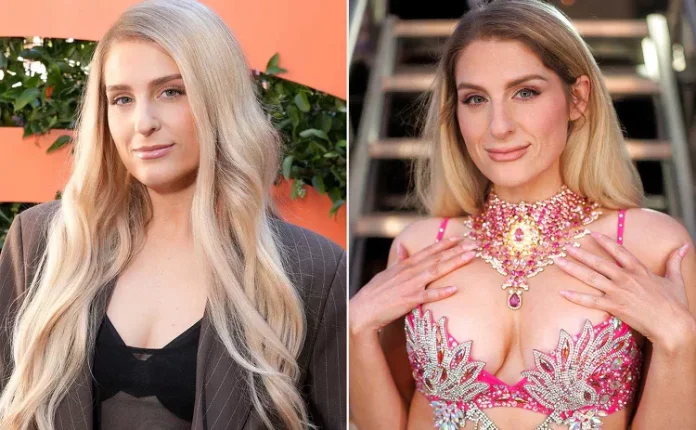
:max_bytes(150000):strip_icc():focal(748x309:750x311):format(webp)/meghan-trainor-spotify-now-playing-event-2024-wango-tango-2025-051225-4630519adf5245dca115d10b15e44d99.jpg)

